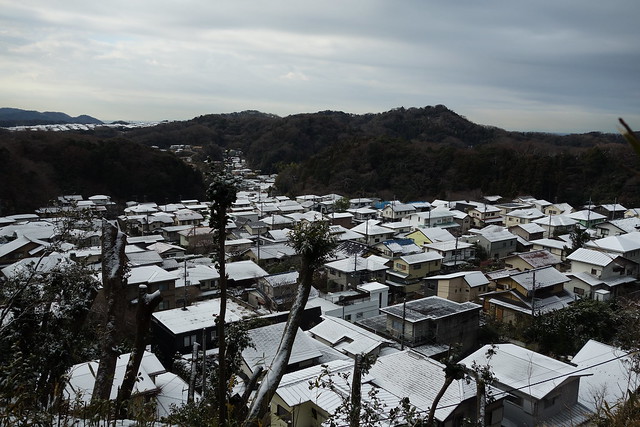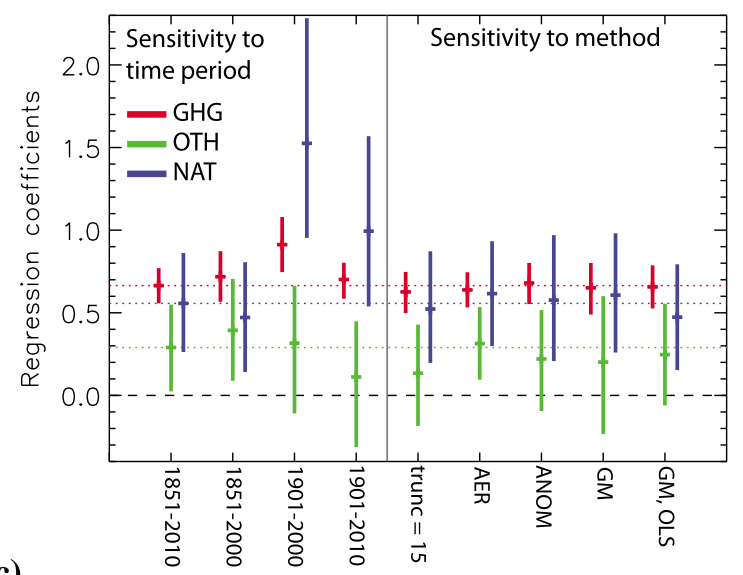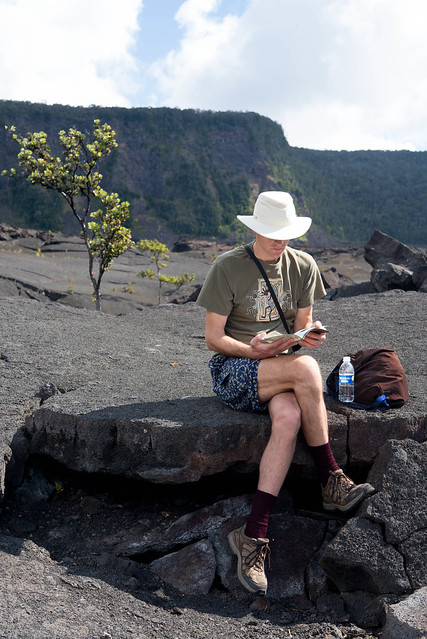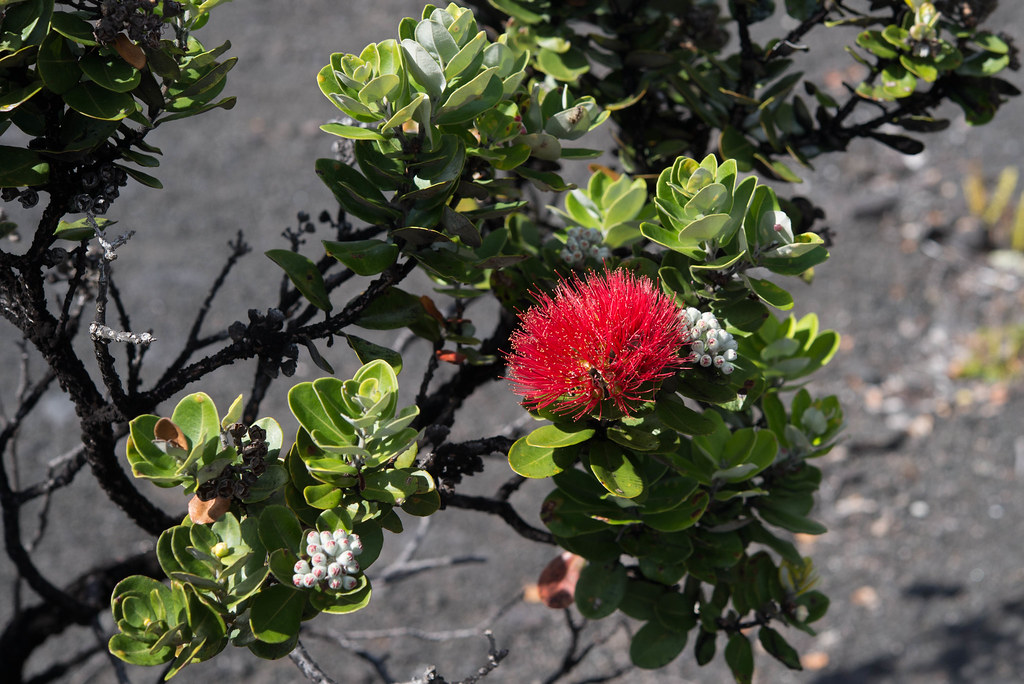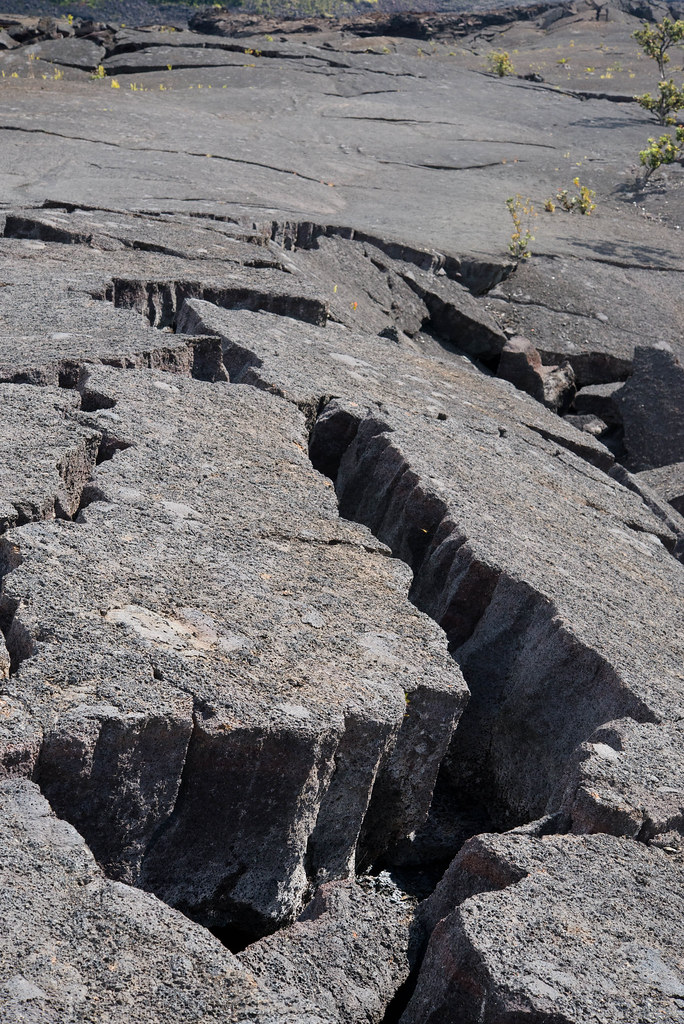As James said, I wasn't really trying. I had sufficient energy to look like I was really running as I crossed the finish line!
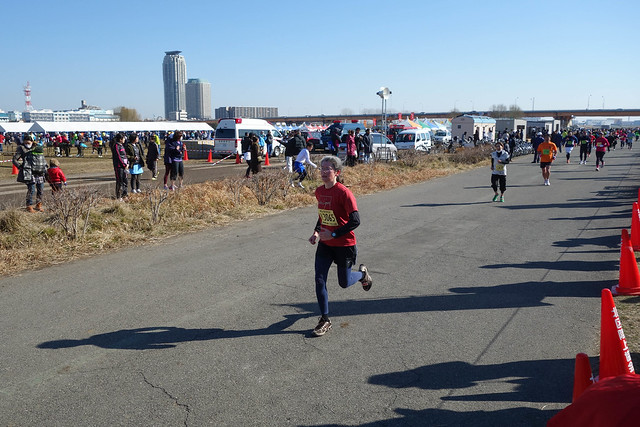
I've always been quite aggressive in cycling and rowing competitions, but I haven't got the heart to try to beat all the wee Japanese women just doing their cutie best. I tend to go with them a little and then let them pass just so they can feel good. Of course if I see a child or another whitey then I can't help but start racing, but I saw none of either in this race, so had a pretty easy time. I stuffed loads of men, so what was the point trying to be faster? Some of those men shown here, rolling up some time after I'd already changed.
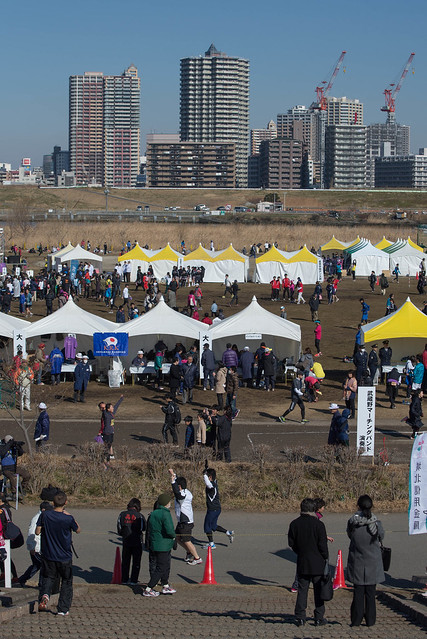
The bonus was that I had lots of energy left over for photographing the half-marathon.
Fingers on Garmins...
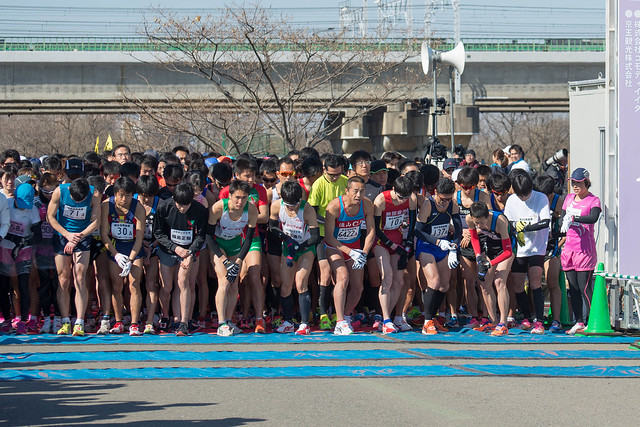
Those at the front without numbers, but names instead, are special invited runners.
Go!
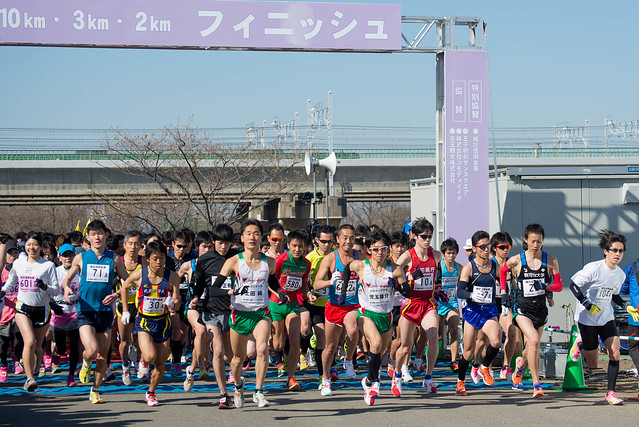
There were about 5000 runners, and things quickly got less serious.
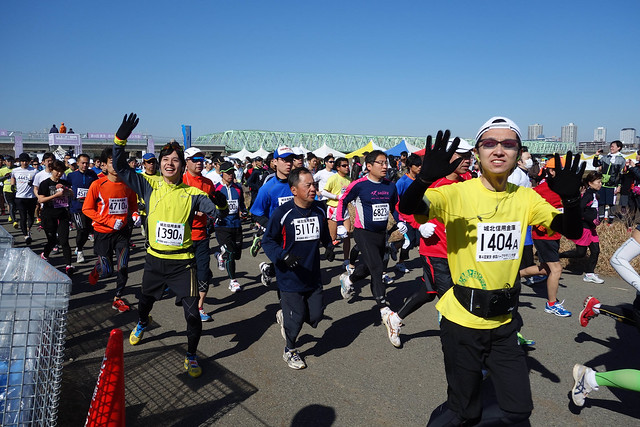
I'm not quite sure why some people were bothering. After I decided to move up the course for a different view, I found I was walking almost as fast as some of the runners. But it did make me think I too could complete a half marathon! The course had a small number of small hills. We both found it curious that the other runners didn't run down hill but rather just maintained their pace. I passed many on each of the down hills. Is this not running on hills a secret runners' trick, or had these people just never seen a hill before?

Beautiful scenery all around ... not.
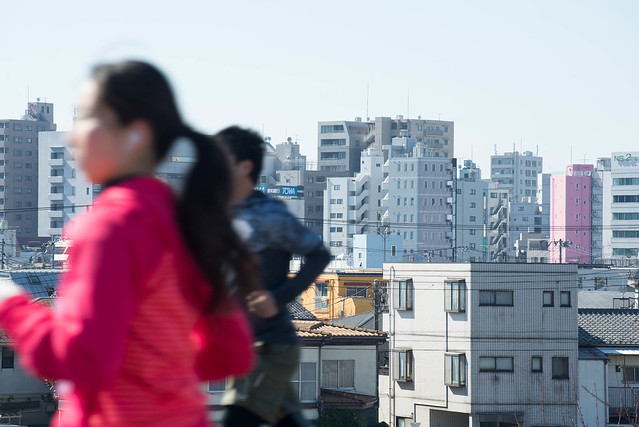
I was in position up the course by the time the leaders returned (around 17km). Luckily the correct people (note no numbers on chest) were in front, but they are kind of boring to photograph, zooming along like well oiled machines. Cyclists legs are so much sexier... sigh...

The not-quite-leaders were more fun as they were in significantly more pain.
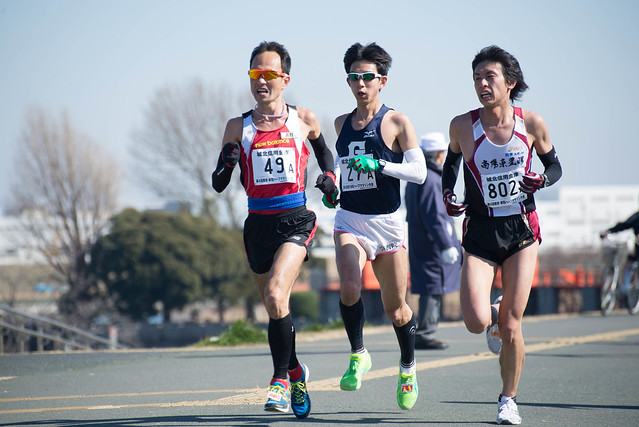
Further back, this group still seemed to be running quite powerfully.
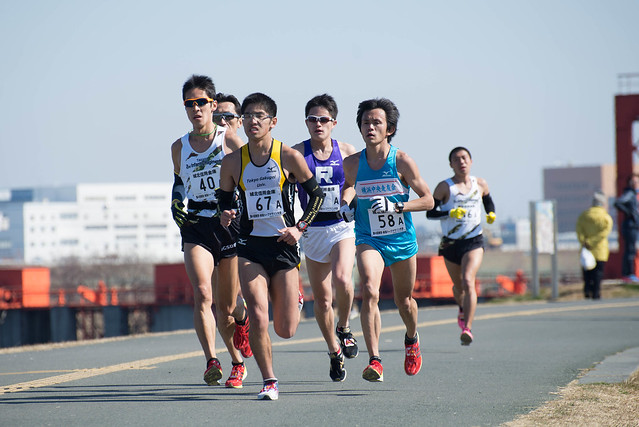
Then came the funny body shapes, those in fancy dress, and finally the women and children came jogging passed. Here's enormous James being beaten by a tiny little woman. At this point, he'd just helped her through the strong headwind section. What a kind man! Seems he has the same problem as me with racing the tiny women. She beat him by about half a minute in the end.
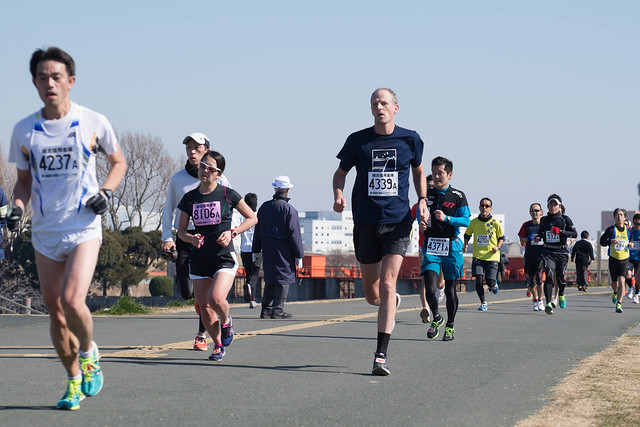
This was as good as the views got. Was it really worth getting out of bed for?

Not everyone just pushed buttons on their Garmin as they cross the line.

I think fewer die after the half-marathon than the
marathon. Mostly the finishers looked quite chipper.
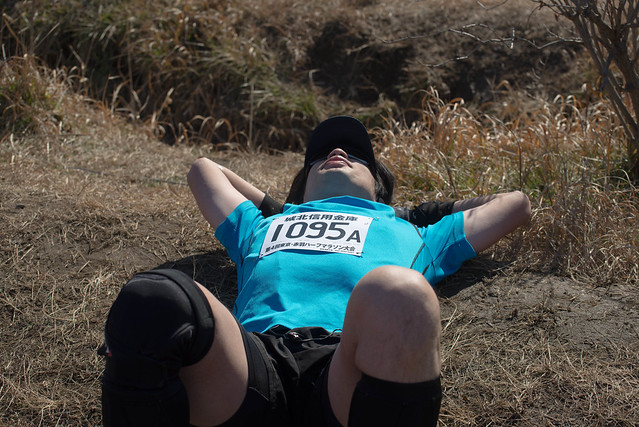
--
Posted By Blogger to
jules' pics at 2/11/2013 08:52:00 PM





